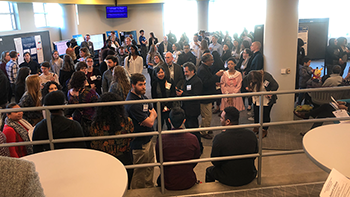Bigfoot Inspires Youth: Leave No Trace in Urban Afterschool Programs
Description/Abstract/Artist Statement
Currently, youth especially urban youth, are being disconnected from nature (Dawes, Pollack & Sada, 2017; Deutsch, Blyth, Kelley, Tolan & Lerner, 2017). Recent studies show that youth only spend about 15-25 minutes outdoors recreating (Atchley, Strayer & Atchley, 2012). Youth are now exposed to high-arousing stimuli from social media, video games, and videos on mobile devices (Larson, Szczytko, Bowers, Stephens, Stevenson & Floyd, 2018). Nature-based programs have short-term and long-term effects on youth (Asah, Bengston, Westphal & Gowan, 2018). Youth who are involved in nature-based programming have demonstrated improved test scores, self-discipline (Seltenrich, 2015) and have become more environmentally aware when they mature (Liddicoat & Krasny, 2013). Out of school time (OST) programs can provide an effective setting for nature-based programs. The Leave No Trace for Every Kid educational initiative focuses on educating youth about environmental stewardship based on values and asset development (Leave No Trace for Every Kid, 2019). These values help build youth’s affinity for nature through outdoor camps and OST programs that provide opportunities for youth to spend time in the outdoors and learn skills that can be related to everyday life (What Is Leave No Trace for Every Kid, 2019). Thus, the purpose of this study is to measure the impact of an OST program using the Leave No Trace Bigfoot's Playbook help connect urban youth to the environment.
Faculty Advisor/Mentor
Eddie Hill
Presentation Type
Poster
Disciplines
Outdoor Education
Session Title
Poster Session
Location
Learning Commons, Atrium
Start Date
2-8-2020 8:00 AM
End Date
2-8-2020 12:30 PM
Bigfoot Inspires Youth: Leave No Trace in Urban Afterschool Programs
Learning Commons, Atrium
Currently, youth especially urban youth, are being disconnected from nature (Dawes, Pollack & Sada, 2017; Deutsch, Blyth, Kelley, Tolan & Lerner, 2017). Recent studies show that youth only spend about 15-25 minutes outdoors recreating (Atchley, Strayer & Atchley, 2012). Youth are now exposed to high-arousing stimuli from social media, video games, and videos on mobile devices (Larson, Szczytko, Bowers, Stephens, Stevenson & Floyd, 2018). Nature-based programs have short-term and long-term effects on youth (Asah, Bengston, Westphal & Gowan, 2018). Youth who are involved in nature-based programming have demonstrated improved test scores, self-discipline (Seltenrich, 2015) and have become more environmentally aware when they mature (Liddicoat & Krasny, 2013). Out of school time (OST) programs can provide an effective setting for nature-based programs. The Leave No Trace for Every Kid educational initiative focuses on educating youth about environmental stewardship based on values and asset development (Leave No Trace for Every Kid, 2019). These values help build youth’s affinity for nature through outdoor camps and OST programs that provide opportunities for youth to spend time in the outdoors and learn skills that can be related to everyday life (What Is Leave No Trace for Every Kid, 2019). Thus, the purpose of this study is to measure the impact of an OST program using the Leave No Trace Bigfoot's Playbook help connect urban youth to the environment.


